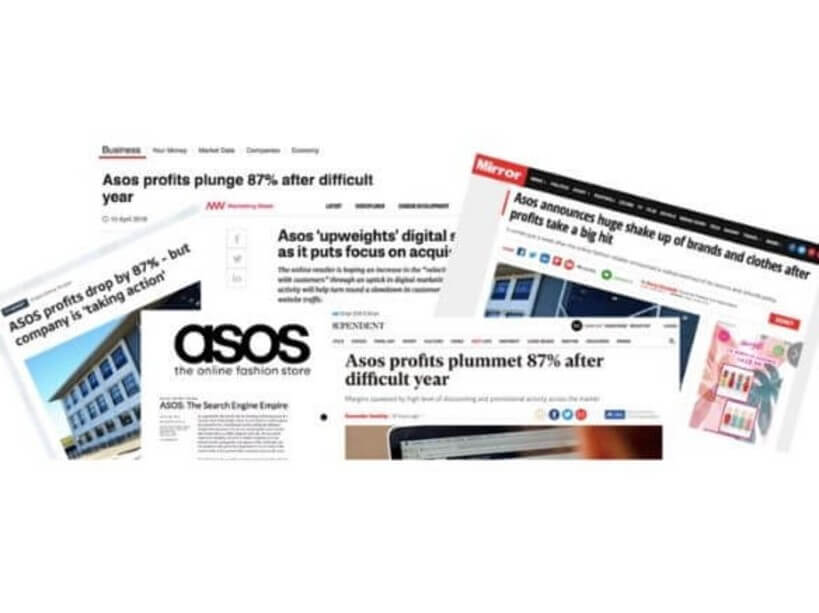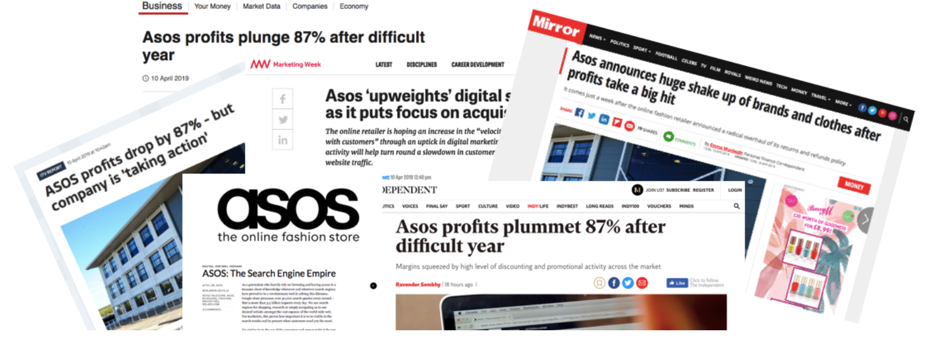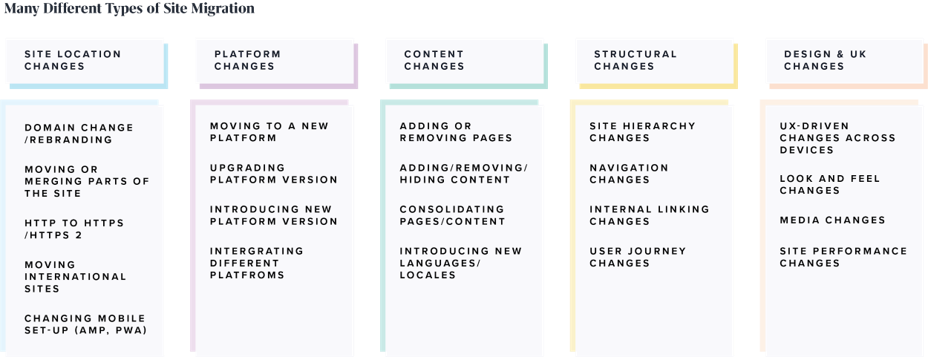
Explore our NEW Knowledge Base and Help Desk to find everything you need to attract, engage and convert talent with your Vennture website.
Discover More
An 87% plunge in profits hints at more than just a difficult year and certainly not something you’d expect to see from ASOS, a huge name in an industry worth over £220 billion. However, that’s exactly what happened in April 2019 and fingers have been pointed towards website traffic issues caused by poorly planned site migrations.

Site migrations aren’t easy and it’s important to ensure they’re done correctly the first time around. Often businesses don’t understand what’s at stake but failing to migrate correctly can severely harm your keyword performance and organic visibility. Even worse, once the damage has been done, it’s almost impossible to go back and recover any lost rankings.
A site migration is a term broadly used by SEO professionals to describe any event whereby a website undergoes substantial changes in areas that can significantly affect search engine visibility — typically changes to the site’s location, platform, structure, content, design, or UX.
From URL changes to re-structured navigation, each of these events needs to be planned and mapped out accordingly to prevent a drop in organic performance. One small mistake can undo years of hard work and search engine optimisation. In turn, this will have a detrimental effect on any business, but especially in eCommerce where the competition is so fierce.
Fashion moves quickly and competitors such as Boohoo and MissGuided are just waiting to pounce on the top spots in the search engine results page. So, if a business is looking to commit to a site migration they need to take advantage of the short window to get everything right. Failing to do so will see competitors jump ahead, while those who dropped the ball will have to spend a long time fighting for their old positions.

ASOS' generic search traffic is now at the same level as in September 2013; a reversal of 5½ years of SEO investment.
Between May 2017 to May 2019, the company saw a 77% drop in non-branded keywords at position 1-3. It’s easy to assume that the ASOS brand name would be enough to negate any drop in organic rankings. However, it’s clear this had a serious impact on revenue, contributing to the reported 87% drop in profits.


To sum it all up; Bad choices were made, Google found out.
The data tells us this didn’t occur overnight, their visibility has been seeing drops as far back as June 2017.
In 12 months, the site lost about 60,000 top-3 rankings for generic keywords, losing them close to 4 million monthly clicks. SEMRush estimates over 100,000 keyword rankings dropped out of the top 100 entirely.
That’s not to say ASOS has lost all visibility, SEMRush estimates they receive 3.6 million monthly clicks and while this is still a monumental amount, it’s less than half of what they had 2 years ago.
These changes wouldn’t have been made on a whim, there will have been more than enough justification to take the website in new directions. However, the result shows how important it is to consult an SEO specialist before making wholesale changes to a website, Something ASOS learnt the hard way.
From an agency’s perspective, we’re hired for a reason and we do thorough research before making any recommendations. This ensures there won’t be any detrimental effect as a result of our work.
In ASOS’ case, a lack of redirects and proper mapping caused a major drop in organic traffic, but there are many more SEO factors in play.
ASOS have been going through a lot of changes on their front-end to evolve with the sector and keep their content fresh. However, they adopted new navigation without placing redirects from the old pages to the new.
Not having an adequate redirect plan in place can massively affect the organic performance and overall usability of the site. If a crawler is hit with a 404 error, it will struggle to bypass this page and as a result, can’t crawl any of the new ones.
By not placing 301 redirects from old to new pages, ASOS risked a drop in organic performance as none of the previous authority, link equity and keyword performance were passed over.
On their previous mobile site, ASOS added a command blocking the crawler from their robots.txt file. As a result, any domain authority and link equity gathered by the old website would not be passed over to the new one.
In this instance, the error didn’t lie with the redirects, ASOS had placed them accordingly and followed best practice. The problem was caused by the command blocking the crawler, it meant that the old website would not be indexed, and any link equity would be lost.
Sometimes blocking crawlers from your site is necessary, especially when you’re making wholesale changes. However, it should always be done with caution as one wrong character input could result in your entire website being left unindexed.
As an eCommerce business, site speed should always be a priority. However, at the beginning of May, ASOS’ homepage took around 10 seconds to load on desktop. Considering the average speed is 3 seconds, this isn’t just bad for a user’s experience, but for search engine crawlers too.
Each site is given a set crawl budget and if 10 seconds of this is being wasted waiting for load times, then there’s the risk that hundreds of pages may not be indexed.
It seems crazy that a brand such as ASOS couldn’t rely on brand loyalty and reputation.
That’s because their generic keyword rankings were neglected, and they failed to capture audiences looking for specific products such as ‘Black Jeans’.
For these users, where they buy is less of a priority and in such a competitive market the customer could easily find themselves browsing ASOS, Boohoo or Missguided.
So, the reason that losing generic keywords matters is because new customers searching for specific products are now being driven towards ASOS’ competitors. A drop in new customers means fewer people into the CRM funnel, returning to site and downloading the app.
Naturally, businesses need to change and adapt to survive in the eCommerce industry. However, this doesn’t mean that they can ignore the effect it may have on their search engine optimisation. As an agency, it is our responsibility to ask questions and gain a clear understanding of your drivers and business objectives. This allows us to help plan the changes to ensure a smooth migration.
At Venn, we’ve handled plenty of site migrations. So, no matter what changes our clients make to their site, we provide them with the SEO knowledge to keep their business thriving. To find out more, take a look at our SEO work or get in touch today.